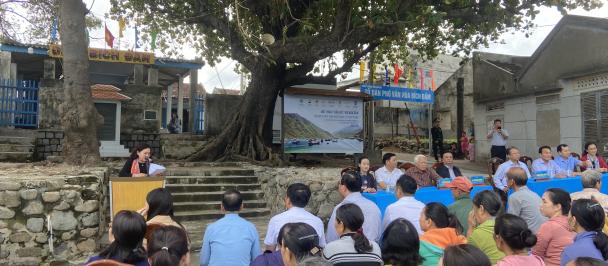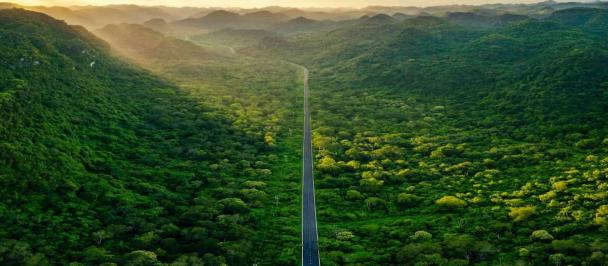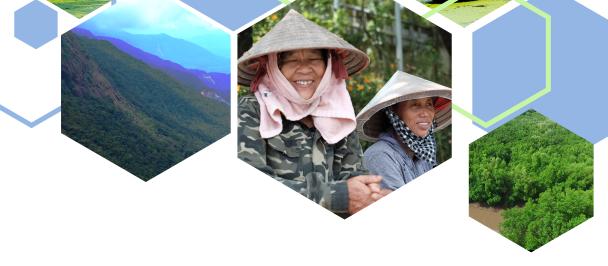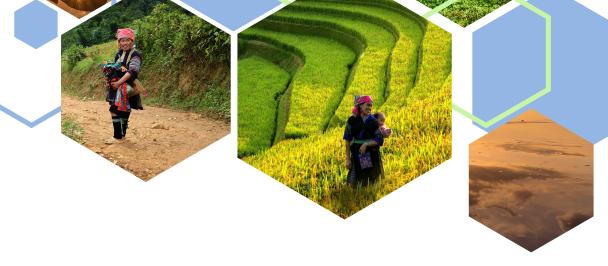Photo: Newspaper of Natural Resources and Environment
Recently, in the fishing village of Nhon Hai commune, Quy Nhon city, villagers and local authorities have been very happy and heartened to see female sea turtles coming ashore to lay their eggs and baby sea turtles on the sandy beach of Hai Dong village. Those persons who help female sea turtles give birth to babies are affectionately called "fathers" to the hatchings by the locals.
In the commune, three men are affectionately known as the "fathers" to baby sea turtles, namely Mr. Nguyen Ton Xuan Sang, a member of the Community Organization for Aquatic Resources Protection, and two border guards at the Nhon Hai Border Guard Station. They were present at all four times when the female sea turtles returned to their spawning beach to help protect them while they were laying their eggs, and returning safely to ocean, and then relocated their clutches to safe sites and help protect the hatchings.
“The Nhon Hai Border Guard Station performs the task of defending national sovereignty and preserving political security, social order and safety in the maritime border area, and proactively working together with local government authorities and the community group for aquatic resources protection in Nhon Hai commune”
“Often we’ve detected and protected female sea turtles coming ashore to lay eggs. Previously, I participated in a release of female sea turtles to the sea and acted as their “midwife” four times in 2018. On some nights, we relocated their clutches right after they had been laying eggs until one a.m. next day but we didn't feel tired. I was so glad to see their clutches we have cared and protected, and the hatchings. A higher hatching level of the clutches is the happiness of our staff and the entire community here," said Mr. Ta Thanh Tuan, a guard officer at the Nhon Hai Border Guard Station.
According to the local people, many villagers used to dig sea turtle nests to gather eggs for food in the past, but since 2008, their nesting sites have been protected with financial supports provided by local and international NGOs such as the International Union for Conservation of Nature (IUCN), the Center for Marine Life Conservation and Community Development (MCD), and the German Government through the ICCA GSI projects implemented by UNDP/GEF SGP program in 26 countries.
The Binh Dinh Fisheries Authority has in collaboration with Binh Dinh Fisheries Association, relevant partners, local government authorities and people, established community based organizations (CBOs) in Nhon Hai to protect sea turtles and coral reefs. At the same time, the guard officers of the Nhon Hai Border Guard Station have actively raised awareness and promoted advocacy work to encourage local people to halt the digging and destroying sea turtle nesting sites.
Mr. Nguyen Ton Xuan Sang, who directly employs the techniques in relocating the clutches, added that he often performs community activities in the locality with various titles of the job, i.e. Head of the Commune Coral Protection Group; Head of the Domestic Waste Collection Group; Member of the Community Organization for the Commune Aquatic Resources Protection; and Deputy Head of Nhon Hai Commune Fishery Tourism Service Cooperative.
As a participant in the monitoring and protection of corals, he is often called by local people on phone whenever they detect sea turtles being caught in the net to release them to the sea. Since 2019, he has saved and released five sea turtles to the sea. Since the return of female sea turtles to lay their eggs in the Hai Dong village’s beach, four clutches have been relocated and protected, and the eggs of one clutch have hatched out successfully.
Moreover, the local sea turtle protection activities received widespread mass coverage across the country, which is the pride and joy of the Nhon Hai commune’s government authorities and local residents.
Local available statistics indicate that there are four sea turtle clutches of 384 eggs relocated to a safe nesting place (as they are close to the water's edge and likely to be affected by high tide) since the beginning of the year by the Community Aquatic Resource Protection Group in collaboration with the Nhon Hai Border Guard station, the commune’s militia under the direction of the commune’s government authority.
Nowadays, signs of the sea turtle protection area were put up, monitoring and check activities have been regularly undertaken to protect sea turtle spawning beaches and their clutches, and to help protect the hatchings. As a result, a proportion of 54% of eggs in one clutch was successfully hatched, although this clutch of eggs was relocated nearly one day after being laid.

 Locations
Locations




